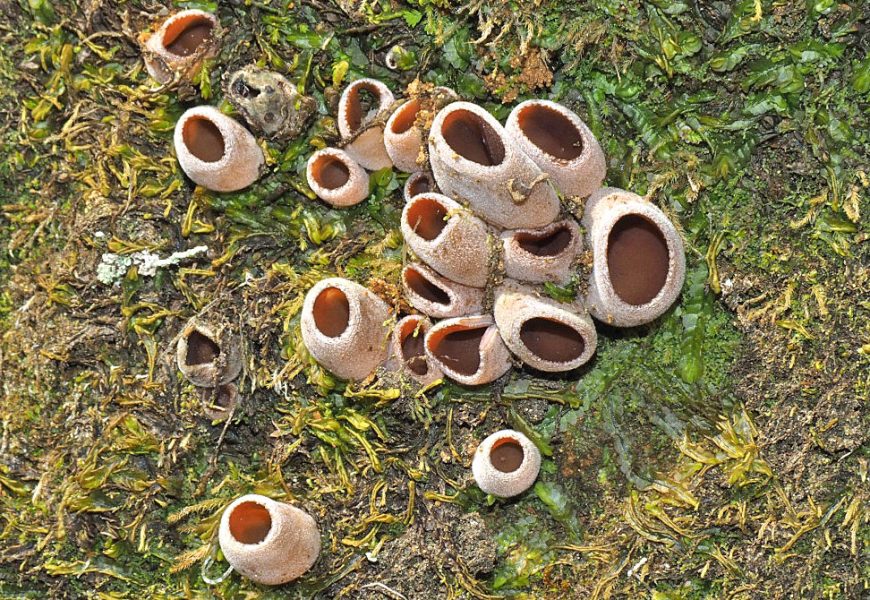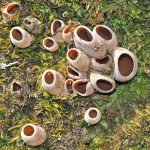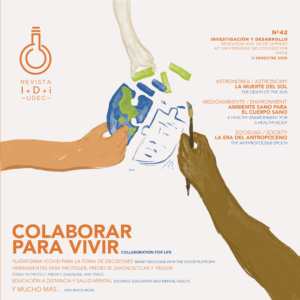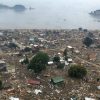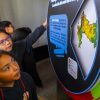By: Cecilia Saavedra Ordenos, journalist – UdeC Nature Campus / alsaavedra@udec.cl
Images: Credits to Alejandro Zoñez and Götz Palfner
Leer en español
In November 1906, American mycologist Roland Thaxter toured the forests of Concepción and collected, without knowing it, a species hitherto unknown to science. It was the fungus today identified as Nothojafnea thaxteri. It is a rare species, with very few records in the country: “Until recently it was thought that the species was extinct in its place of discovery, which is Concepción”, highlights Dr. Götz Palfner, academic of the Department of Botany of the University of Concepción, who was able to register together with a group of students’ specimens of this fungus, during a field trip to UdeC’s Nature Campus.
This finding shows that the fungus, one centimeter in diameter and cup-shaped, is still present in the territory. The academic says they found it before entering the forest, just by the side of the access road. “It is a small species, not very striking, but of great mycological interest,” says Dr. Palfner, who has been studying the native fungi of Chile for more than two decades.
The species belongs to the group of ascomycetes, like the truffles and the digüeñes. It has white tones on the outside and a dark red inside. “The interesting thing is that this species, according to recent genetic studies, is related to the northern Hemisphere truffles. It is like a great-great-grandfather of truffles,” explains the academic.
The relevance of the finding is not only scientific. This fungus is a vulnerable species in the IUCN Global Red List of Fungi. However, the classification does not yet consider the new Concepción records. “It would be important for someone to take this and prepare a national file for the Ministry of the Environment. There is a heritage here that can be protected if its presence is recognized,” proposes Dr. Palfner.
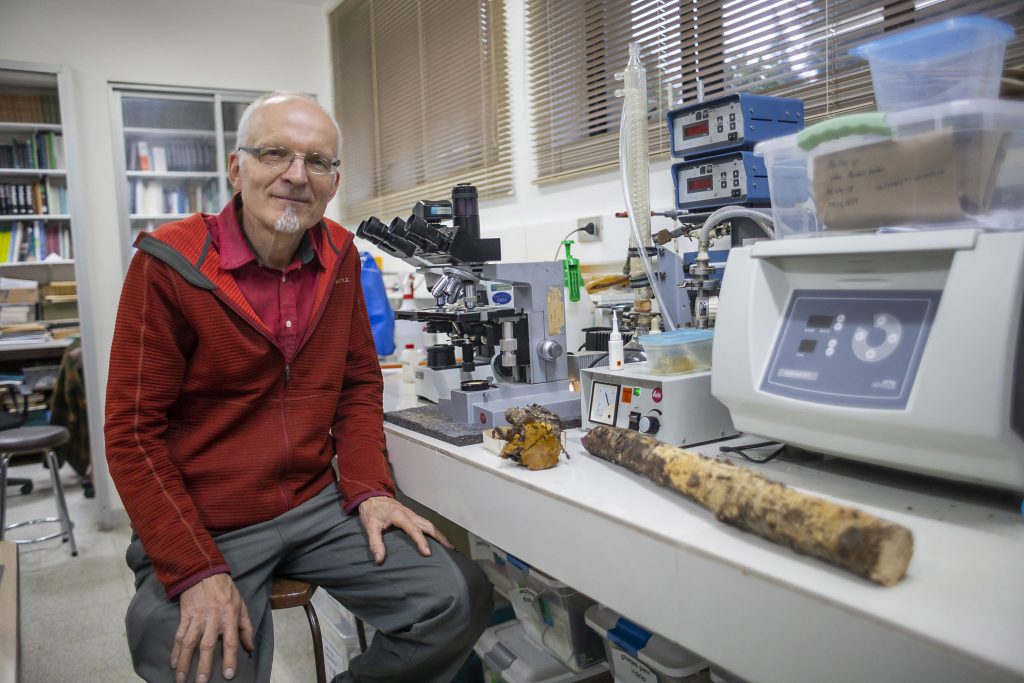
From Concepción to the World
The history of this species is a journey through the history of mycology. After being collected in 1906, the sample remained unstudied until 1957, when American mycologist Edith Cash named it Peziza thaxteri in honor of its original collector. Years later, in 1971, the Argentine specialist Irma Gamundi revised the classification and assigned the current name: Nothojafnea thaxteri.
“We didn’t know anything more about this species for a long time. It doesn’t even have a common name. In 2014, I found it again in the Los Ruiles National Reserve in the Maule Region. But the big question remained whether it still survived in his place of origin. Today we can say yes,” says the specialist.
The rediscovery of Nothojafnea thaxteri adds to a long list of records Dr. Palfner’s team collected at UdeC Nature Campus. This space protects 25 hectares of native ecosystems, including fragments of forest of Nothofagus obliqua (hualle), species with which this fungus forms mycorrhizal associations. “We know that this species forms symbiosis with the hualle. It is enough that there is only one tree for a considerable diversity of fungi to accompany it,” he says.
An ecosystem that needs to be taken care of
“Forests don’t work without fungi. That’s the truth. They would not exist as we know them without these species that work quietly underground,” emphasizes Dr. Palfner, opening a window into a tiny world, but decisive for the balance of ecosystems.
The finding occurred in September 2024 and was part of a fungal ecology course field activity. “Almost every year, we find something unknown. They may be fungi not previously registered in Chile or even new species,” says the professor. However, the academic believes there is still a lot to do: “There is a lot of information about flora and fauna, but fungi are still the big forgotten ones. We need more educational initiatives, from trips to the forest to specific teaching materials.”
In this line, UdeC’s Nature campus has become a privileged platform for mycological training and research. “It’s a luxury to have this forest next to the university. We don’t have to travel far to do world-class science,” he says. As Dr. Palfner assures, every patch of native forest, no matter how small, deserves to be conserved. “They are vital refuges for endemic species that could disappear without us even knowing about them.”
In addition, UdeC’s Nature Campus highlights the urgency of considering fungi as key actors in ecosystems. From their role in the decomposition and recycling of nutrients to their role as allies in the restoration of forests, fungi are becoming visible as an essential part of the biodiversity we must protect. For this reason, Dr. Palfner plans to continue researching in unexplored sectors of this space. “They told me that there are more patches of forest higher up, which I don’t know. So, we’re going to extend our research into those areas. There is always something new to discover.”
Learn more about UdeC’s Nature Campus (Campus Naturaleza UdeC)
Last modified: 3 de septiembre de 2025
